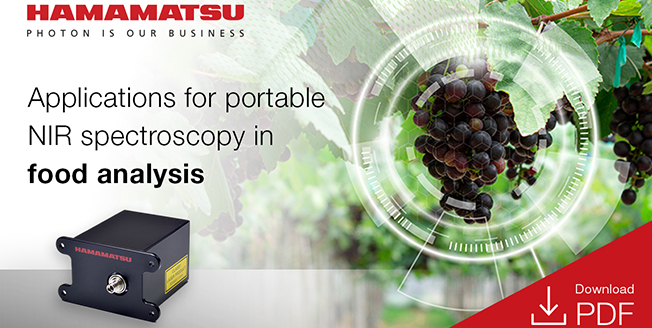
Near-infrared spectroscopy (NIR) refers to the study of the interaction between matter and light within the electromagnetic spectrum's near-infrared region which ranges from 750 to 2500 nm [1] . When infrared light interacts with a sample's molecules, the amount of electromagnetic energy that is reflected, transmitted, and absorbed for each wavelength depends on the bond types present in the sample [1] . The C-H, N-H, and OH vibration bonds are the most prevalent in the NIR region, determining the spectra shape of a given substance.
NIR spectroscopy is commonly used to measure and quantify a sample's proximate composition, such as protein, moisture, dry matter, fat, and starch. Additionally, the NIR spectrum reflects its physical properties or characteristics [1] . As a result, when applied to food, the NIR spectra of samples can provide information not only about the food's chemical composition but also about its functionality via a non-destructive, rapid, and clean approach that does not require the use of reagents [2] .
The impact of portable instruments
Only recently has NIR technology evolved towards miniaturized devices, making it possible to bring NIR analysis from lab to field. Portable near-infrared (NIR) spectroscopy is an excellent tool for monitoring crop quality and determining optimal cultivation conditions and harvesting time. The importance of controlling food quality cannot be overstated given the high vulnerability of foods to content variation, the need to maintain freshness to prevent quality loss, and the possibility of illegal adulteration. Moreover, the complex nature of the food production, delivery chain and the need to reduce analysis time to a minimum has made portable spectrometers a revolutionary step forward in this field.





